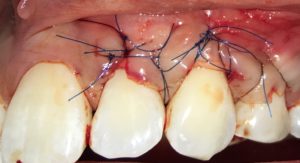Blog
Good long term results for tissue grafts?
Methods:
Forty-seven patients with 64 sites with lack of attached gingiva were treated with free gingival grafts and 64 control site...
Platelet-rich fibrin (PRF) to treat periodontal intrabony defects?
Methods:
36 intrabony defects in 36 individual patients were treated with either demineralized freeze-dried bone allograft (DFDBA) o...
“Growth and Profit for Your Practice”- a Full Day CE Seminar on Sunday, November 20th, 2016 at the Trump International Hotel, 325 Bay Street, Toronto.
This course will help you transform your practice, attract more patients, and increase profitability.
Course Objectives:
How to a...
Are Long Terms Results for Collagen Matrix Comparable to Autogenous Tissue for Root Coverage?
Methods:
Collagen matrix used with a coronally advanced flap was compared to a connective tissue graft used with a coronally advance...
Does Suture Removal Time Affect Root Coverage Outcome?
Methods:
A meta-analysis of randomized clinical trials that assessed single tooth class I or II recession defects treated surgically ...
Is Root Coverage Effective for Dentin Sensitivity?
Methods
A systematic review of the literature regarding the efficacy of surgical root coverage at reducing cervical dentin hypersensit...
How Successful is Peri-Implantitis Treatment?
Methods:
A retrospective study on 382 implants with peri-implantitis in 150 patients. Peri-implantitis was defined as pockets ...
Do block graft complications lead to treatment failure?
Methods:
Implant supported restorations were placed in 137 atrophic ridges that were augmented with cancellous block-bone allografts. ...
Does Timing of Restoration Affect Implant Marginal Bone Loss?
METHODS:
A meta-analysis was performed on eleven studies that compared marginal bone loss between implants restored with...
Does Sinus Membrane Perforation Affect Implant Survival?
Methods:
Retrospective data was obtained from 23 patients who had undergone sinus augmentation procedures with a total of 40 treated s...





